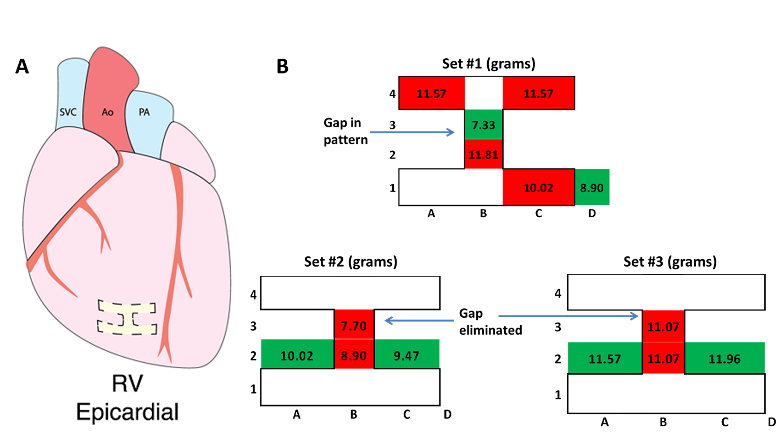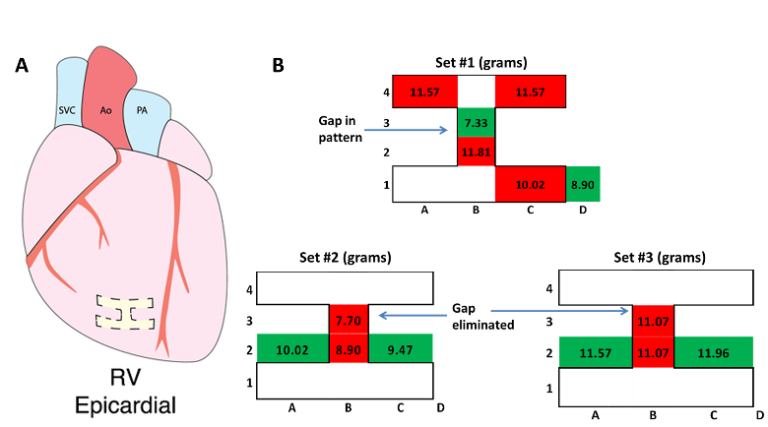 The use of therapeutic ablation in patients with atrial fibrillation has become a mainstay in the treatment of this disease, yet often these individuals require multiple procedures. In other words, successful first time treatments are impacted by challenges including the generation of linear lesions in certain anatomies like the mitral isthmus of the left atrium. Hence, there is a need to find ways to address the presence of unwanted conduction gaps at the time of lesion creation. In this study, we describe a novel approach to examine conduction gaps, by using a proof of concept device to examine local electrical activation within the cardiac areas of an applied lesion, i.e., to locate gaps in the lesion set. To accomplish this, both epicardial and endocardial linear ablation lines composed of spot lesions with conduction gaps were created in a porcine model. The force necessary to generate a monophasic action potential (MAP) was collected from 203 measurements on the epicardium of the right ventricle. Ablations were then performed on the ventricular epicardium and on left atrial mitral isthmus endocardially, while recording MAPs. We were able to successfully demonstrate the use of a proof of concept device to identify conduction gaps in a linear lesion set; furthermore, we were able to determine required contact forces to appropriately determine focal electrical changes of the underlying tissues. New catheter designs that incorporate capabilities to record focal MAPs could be employed clinically to better assess a given lesion quality and/or to determine the existence of an undesired conduction gap.
The use of therapeutic ablation in patients with atrial fibrillation has become a mainstay in the treatment of this disease, yet often these individuals require multiple procedures. In other words, successful first time treatments are impacted by challenges including the generation of linear lesions in certain anatomies like the mitral isthmus of the left atrium. Hence, there is a need to find ways to address the presence of unwanted conduction gaps at the time of lesion creation. In this study, we describe a novel approach to examine conduction gaps, by using a proof of concept device to examine local electrical activation within the cardiac areas of an applied lesion, i.e., to locate gaps in the lesion set. To accomplish this, both epicardial and endocardial linear ablation lines composed of spot lesions with conduction gaps were created in a porcine model. The force necessary to generate a monophasic action potential (MAP) was collected from 203 measurements on the epicardium of the right ventricle. Ablations were then performed on the ventricular epicardium and on left atrial mitral isthmus endocardially, while recording MAPs. We were able to successfully demonstrate the use of a proof of concept device to identify conduction gaps in a linear lesion set; furthermore, we were able to determine required contact forces to appropriately determine focal electrical changes of the underlying tissues. New catheter designs that incorporate capabilities to record focal MAPs could be employed clinically to better assess a given lesion quality and/or to determine the existence of an undesired conduction gap.

